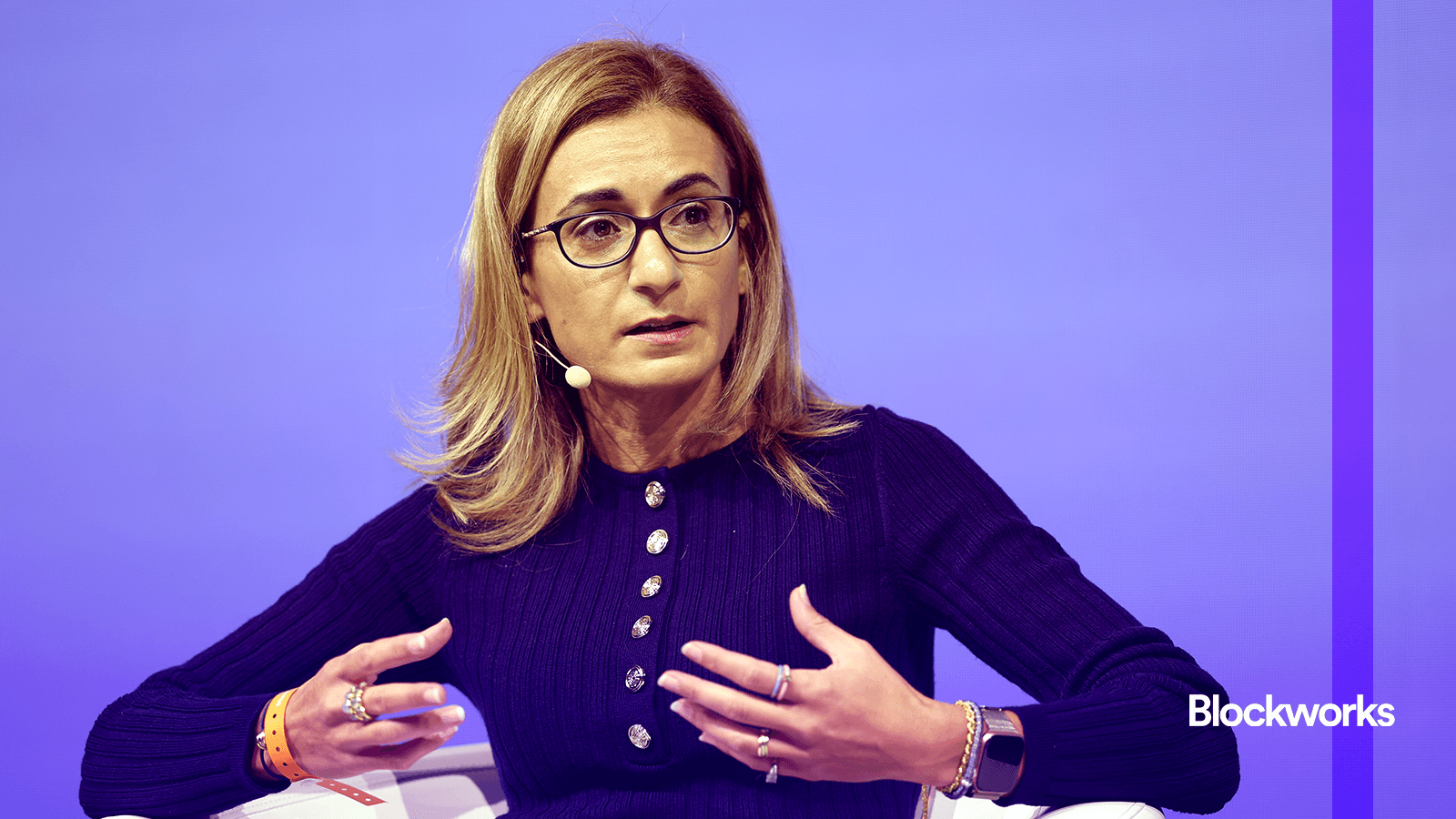Citi posits bank tokens may be more popular than stablecoins
Stablecoins are blockchain’s “ChatGPT moment” says Citi analyst Sophia Bantanidis at DAS London

Citi Analyst, Future of Finance team Sophia Bantanidis | DAS London 2025 by Ben Solomon for Blockworks
Citi has raised its base-case projection for stablecoin issuance to $1.9 trillion by 2030, up from $1.6 trillion earlier this year, with a $4 trillion bull case and a $0.9 trillion bear case.
On Day 3 of DAS London, Sophia Bantanidis, a research analyst on Citi’s Future of Finance team, presented the findings of the bank’s “Stablecoins 2030: Web3 to Wall Street” report, calling the stablecoin boom “blockchain’s ChatGPT moment for institutional adoption.”
Bantanidis pointed to “a huge surge of announcements from digitally native firms integrating stablecoins into commerce, payments and real-world applications,” noting big e-commerce names are “partnering with the wallet providers to accept crypto and stablecoins.”
Stablecoin issuers could become a top Treasury holder —potentially more than any single jurisdiction today, the report says — with $1 trillion+ in T-bills by 2030, amassing political capital in the process.
Bantanidis also cited “regulatory tailwinds” — including the GENIUS Act — and “offshore international demand for holding USD,” as primary drivers of stablecoin growth.
 Ethereum holds roughly $177b of the $306 billion total stablecoin supply | Source: Blockworks Research
Ethereum holds roughly $177b of the $306 billion total stablecoin supply | Source: Blockworks Research
Beyond growth in supply, Citi’s updated outlook projects even more eye-popping numbers for transaction volume. Since stablecoins “can circulate with really high velocity,” Bantanidis said the base case implies roughly $100 trillion in annual stablecoin transaction volume by 2030, or even double in the bull scenario.
But there’s a caveat, she told the London audience: “Stablecoins are not going to be the only game in town.”
“We envision a multi-format, monetary ecosystem,” Bantanidis said, predicting that “bank tokens…will outpace stablecoins in transaction volume by 2030.”
The report models $100–$140 trillion in annual bank-token turnover at modest penetration of large-value payment rails.
On adoption, corporate treasurers “can optimize liquidity management globally” via programmability, embedded compliance and conditional settlement — but many “are likely going to prefer bank tokens and tokenized deposits because of their risk appetite [and] regulatory considerations,” Bantanidis said.
Geopolitically, Citi believes dollar-backed stablecoins could extend USD dominance, with Hong Kong and the UAE among jurisdictions likely to embrace local-currency rails but, Bantanidis cautioned, “there are multiple regulatory loopholes that still need to be filled.” Risks include interoperability and fragmentation, the quality of the reserve assets, transparency and auditability.
Despite lingering uncertainties, one thing is clear, Bantanidis said: “Stablecoins are shifting from a niche decentralized finance experiment into a viable rail for moving money.”
Get the news in your inbox. Explore Blockworks newsletters:
- The Breakdown: Decoding crypto and the markets. Daily.
- 0xResearch: Alpha in your inbox. Think like an analyst.






